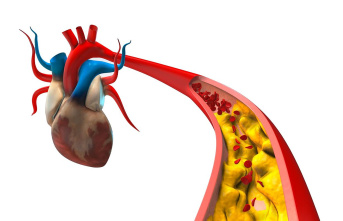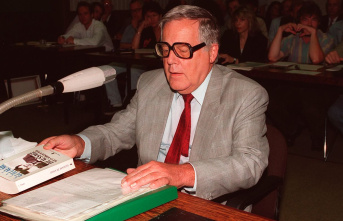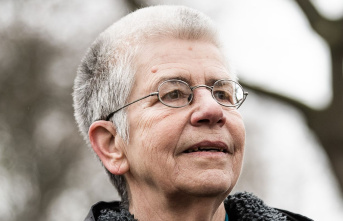The San Isidro festivities are back to what they were, after two years of interruption due to the health crisis caused by Covid-19. The City Council of the capital has designed a very varied program, which includes cultural, musical and leisure performances. The people of Madrid, many of them dressed as chulapos and chulapas, go to the most emblematic places such as Pradera or Las Vistillas to enjoy their patron saint festivities with friends and family, including the most traditional dance: the chotis.
However, although it may seem strange, many of the locals are unaware of the historical overtones that surround San Isidro. ABC has selected ten curiosities, through questions and answers, to value the development and evolution of these popular celebrations.
Next Sunday, May 15, the festival of San Isidro will be celebrated, a very special day in the Spanish capital as it is the patron saint of the city. But what is the origin of this character? Isidro was a Mozarabic farmer born in Muslim Madrid (Mayrit), around 1082, shortly before his domains passed into Christian hands. It is said that he saw the light in a family of humble origins that worked the leased fields owned by the warrior knight Juan de Vargas. The chroniclers write that he received the name Isidro probably in honor of San Isidoro, a wise man and saint, Archbishop of Seville in Visigothic times.
As reported by ABC in a historical article, San Isidro's childhood was spent in the suburbs of San Andrés, which today would be occupied by the central neighborhood of La Latina, in a time considered to be the Reconquest. The military instability of Madrid, which was still a target of the Muslims, forced the saint's family to move to Torrelaguna, where it is said that he met his wife, María Toribia, who also achieved sainthood with the denomination of María de la Head.
The Almoravid sieges of the town of Madrid forced them to flee to what is now the town of Caraquiz, near Uceda, María's place of origin, where she cared for the hermitage of Nuestra Señora de la Piedad while Isidro worked the land. The return of both to a house near the Church of San Andrés is dated in 1119. On November 30, 1172, Isidro died in his home.
Isidro is credited with different miracles that led him to become the patron saint of the city of Madrid, especially those linked to water. For example, it is said that he ended a drought after hitting some rocks with a stick and a spring arose there. Today history is respected with the existence of the spring in the Hermitage of San Isidro, a place where people go to drink as a tradition as it is linked to its "healing properties".
Isidro Labrador's wife was María Toribia, a native of Caraquiz and who was also canonized as Santa María de la Cabeza. Her feast day is celebrated on September 9. The nickname 'de la Cabeza' comes from the relic of her skull, which was venerated for centuries in the hermitage of Torrelaguna and then in a local convent until it was transferred to Madrid in 1645 to be placed next to the body of her husband. in the royal chapel of San Andrés. The truth is that the historical data of María Toribia are imprecise and are attributed more to tradition. This tells that she had a son with San Isidro, whom she met in Torrelaguna fleeing from the Almoravid conquest.
In the 16th century, the gentleman Juan Vargas, who was part of a well-esteemed family of high social status for whom Isidro carried out his work as a farmer, began to build a small hermitage in the now district of Carabanchel in honor of the latter. This is how in 1528 the Hermitage of San Isidro was inaugurated. Years later, in 1619, Isidro was beatified, establishing May 15 as the date of his celebration.
This was the starting point for the pilgrimage of locals and tourists to the aforementioned hermitage to drink water from the spring located there, to which healing properties are attributed, giving rise to the festival of San Isidro. As a tradition, after the pilgrimage, a picnic is held in the Pradera de San Isidro, in which the people of Madrid enjoyed the festivals and gave free rein to their gastronomic taste. In 2021, the Community of Madrid declared the festival a Site of Cultural Interest (BIC) in the category of cultural event.
The chotis, considered the traditional dance par excellence, has a curious origin. The term comes from the word 'Schorrisch', which in German means Scottish and its origin is in a dance from the peasants who lived in Scotland. The dance evolved, passing through different European locations until it reached Germany, to become the polka. This 'grabbed' dance arrives in Madrid in 1850.
According to the chroniclers, it was danced for the first time in the Royal Palace on November 3 of that year at a party organized by Elizabeth II, being considered the German polka. He liked it a lot among the people of Madrid and it spread throughout these lands, becoming popular among the locals. It is said that to adapt it more to the customs of the capital, the barrel organ was introduced, and it became one of the emblems of Madrid during its popular festivals.
After two years of festive interruption due to the health crisis caused by Covid-19, San Isidro returns in its maximum splendor, with its traditional pilgrimage in the Pradera, located in the Carabanchel district. This large green space, officially known as Parque de San Isidro, is the emblematic place par excellence for holding the usual picnics that take place during popular festivals.
Its origin as a place of festive recreation is established thanks to its proximity to the Ermita del Santo. It was Francisco de Goya who in 1788 painted the historic 'Pradera de San Isidro', a canvas destined to decorate the bedroom of the infantas in the Palace of El Pardo. The meadow, as such, was constituted and cataloged as a park in 1970 by the Madrid City Council. In 2006 it was expanded, exceeding 355,000 square meters, which include the fairgrounds during the popular festivals.
Since the end of the 19th century and the beginning of the 20th, different characters of the court's traditionalism adopted a way of dressing that accompanied a certain social behavior. In these years, the most traditional classes sought to differentiate themselves from the Frenchified social elite with a fashion. The chulapos and chulapas were the residents of the Malasaña or Maravillas neighborhood who distinguished themselves by having a certain handsomeness in their dress and in the way they behaved.
The chulapas were the typical ironers of the Cavas, seamstresses, greengrocers, florists, cigarette makers, laundresses, cheerful and happy. They were dressed in a white blouse fitted at the waist with lantern sleeves, a polka-dot skirt or a polka-dot dress down to the feet, a headscarf tied around the neck with their hair tied in a bun, and a Manila shawl. For their part, the chulapos wore a narrow vest or short jacket with a carnation on the lapel, dark and tight pants, a black or small checkered cap, ankle boots and a white neckerchief. In honor of this tradition, the people of Madrid dress in these outfits to celebrate the patron saint of the city, San Isidro.
The San Isidro festivities are days in which the people of Madrid 'pull' a lot of tradition. Gastronomy is part of these popular celebrations, taking great importance in the Pradera, where the most typical foods are given free rein. And of course, there is also room for sweets. Specifically, there are two of the most traditional within this festivity.
The first, donuts, both dumb and clever. The silly ones are processed only with a little sugar, while the lists have a layer of 'fondant'. In addition, there are also the Santa Clara donuts. The second sweet is wafers, a thin sheet of unleavened flour dough, with sugar or honey and flavored with cinnamon, which is usually served in the form of a tube. In addition, the people of Madrid drink lemonade that serves to refresh themselves on dates where the sun traditionally makes an appearance.
Yes, the San Isidro fair, the most prestigious in the world. It is a set of bullfighting festivities that are held in the Las Ventas bullring, between May and June, due to the festival of San Isidro Labrador, which takes place on May 15. The first bullfight of the Fair took place on May 15, 1947, managing to fill the stands every day. In 1950, the Venta del Batán was inaugurated and the bullfighting award for the bravest bull at the fair was created. In 2020, for the first time in history, the fair had to be canceled due to the outbreak of the new coronavirus that became a pandemic.
Drinking water from the famous fountain has become an inescapable tradition for many people from Madrid. This spring dates back to at least the 12th century, when there is some news that its water had "healing" properties.
Apparently, San Isidro had miraculously made the water flow from the spring by sticking his goad into the ground to give his master a drink. It is said that Isabella of Portugal wanted to verify the veracity of the properties attributed to the water from the fountain and, after drinking from it, both Carlos V and her son, Felipe II, both overcame their illnesses. For this reason, Isabel ordered the construction of a new hermitage in honor of the saint in 1528.
The capital is preparing for the Holy Year of San Isidro, granted by the Holy See on the occasion of the 400th anniversary of his canonization, and in which the incorrupt body of San Isidro Ladrador will be exposed. The opening of the jubilee on May 15, the feast of the patron saint of Madrid, will be followed by the solemn exhibition of his incorrupt body for the veneration of the faithful in the Colegiata de la calle Toledo, from May 21 to 27. On the 27th it will go to the cathedral, where a prayer vigil will be held, on the 28th it will return to the collegiate church and on the 29th it will be the solemn closing.
It is called the incorrupt body of San Isidro due to the miraculous after death. In 1212, his remains were exhumed and the body was intact, despite the dampness and frequent flooding of his tomb. It is considered since then as an emblem capable of healing ills.
2












